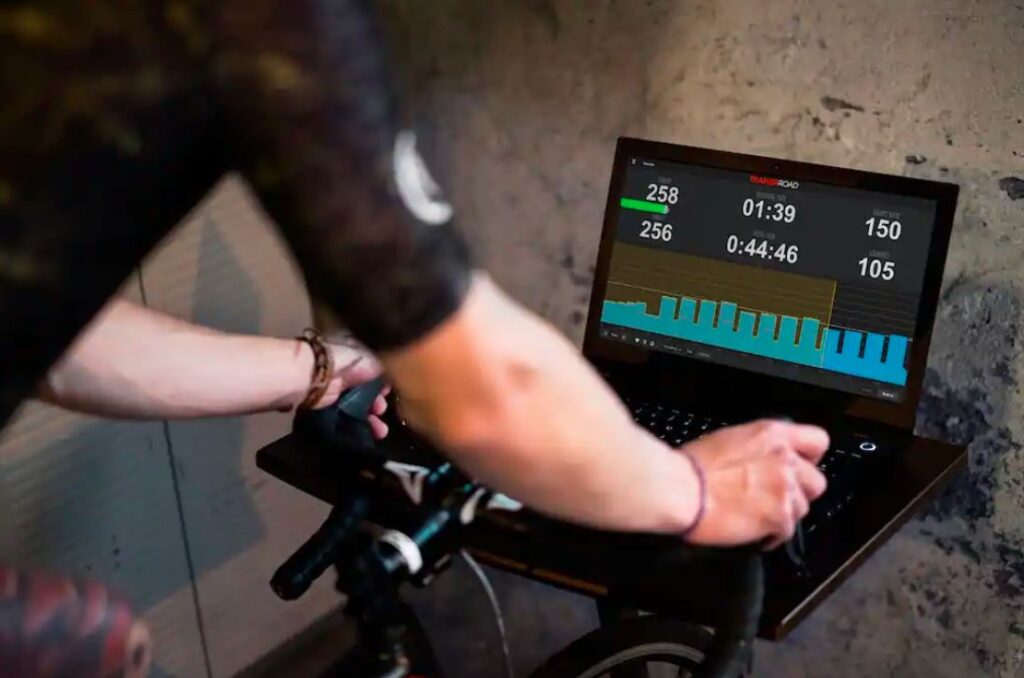Empowering Urban Riders and Enthusiasts
The electric bike (e-bike) revolution is transforming urban mobility and recreational cycling, with global sales expected to hit 40 million units in 2025. E-bikes, offering pedal-assist and throttle options with speeds up to 28 mph, provide an accessible way to commute, exercise, and explore. To maximize their potential for fitness and performance, cycling fitness apps for e-bike training are essential tools, delivering tailored workouts, performance tracking, and route planning. These apps cater to the 82% of e-bike users who are urban commuters, as well as recreational riders seeking to enhance endurance and efficiency. This article explores the best cycling fitness apps for e-bike training in 2025, highlighting their features, benefits, and how they meet the unique needs of e-bike riders.
The Role of Fitness Apps in E-Bike Training
E-bikes combine human pedaling with motor assistance, delivering 80% of the cardiovascular benefits of traditional cycling while allowing riders to cover longer distances with less fatigue. Cycling fitness apps for e-bike training amplify these benefits by offering structured training plans, real-time metrics, and virtual experiences that keep riders motivated. Unlike traditional cycling apps, these tools must account for e-bike-specific features like motor assistance levels, battery range (up to 93 miles), and urban commuting challenges such as frequent stops and traffic navigation.
Why E-Bike Riders Need Specialized Apps
E-bike training differs from traditional cycling due to the motor’s role in reducing physical effort, which affects workout intensity and duration. Urban commuters need apps that support short, high-intensity sessions for 3–10-mile commutes, while recreational riders may focus on building stamina for 20–50-mile rides. Cycling fitness apps for e-bike training must integrate with e-bike systems (e.g., Bosch or Shimano Steps), offer low-impact workouts, and provide navigation for city environments. They also help riders comply with local regulations, such as New York City’s 15 mph speed limit introduced in 2025.

Benefits of Using Fitness Apps
Using cycling fitness apps for e-bike training can boost aerobic capacity by 15–20% and improve leg strength through targeted workouts. Apps track metrics like speed, cadence, and calories burned (300–600 kcal/hour), helping riders optimize their effort. Social features, like group rides and leaderboards, increase engagement by 25%, while navigation tools save up to 20% on commute time by avoiding congested routes. These apps also promote safety by integrating fall detection and compliance alerts, addressing concerns like the 267 lithium-ion battery fires reported in NYC in 2023.
Essential Features of Cycling Fitness Apps for E-Bike Training
Choosing the best cycling fitness apps for e-bike training requires focusing on features that align with e-bike commuting and training needs. Here are the key elements to prioritize:
Device and E-Bike Compatibility
Apps must sync with e-bike sensors (e.g., speed, power, battery level) via Bluetooth or ANT+ for accurate data. Compatibility with smart trainers, like the Wahoo KICKR, is crucial for indoor training, allowing resistance adjustments to mimic outdoor conditions. Apps like Zwift and Rouvy support a wide range of e-bike systems and trainers, ensuring seamless integration.
Tailored Training Plans
E-bike riders need workouts that balance motor assistance with physical effort. Apps should offer short sessions (20–30 minutes) for commuters and endurance plans for recreational riders. Adaptive training, as seen in TrainerRoad’s AI-driven plans, adjusts intensity based on performance, ideal for e-bikes with variable assist levels (e.g., Eco, Turbo).
Navigation and Route Optimization
Urban commuters benefit from apps with e-bike-specific route planning, considering battery range and elevation. Komoot, for instance, suggests routes that avoid restricted zones (e.g., sidewalks in Las Vegas) and optimize for efficiency. GPS navigation ensures riders stay on track in complex urban environments.
Social and Gamified Elements
Community features, such as virtual group rides and challenges, boost motivation. Zwift’s million-strong community offers 24/7 events, while MyWhoosh hosts UCI-sanctioned races, appealing to competitive riders. Gamified elements, like badges and leaderboards, reduce training dropout rates by 30%.
Top Cycling Fitness Apps for E-Bike Training in 2025
Below are the best cycling fitness apps for e-bike training in 2025, selected for their functionality, e-bike compatibility, and commuter-friendly features.
Zwift: Best for Virtual Immersion
Zwift is a leading virtual cycling platform, offering a gamified world with 115+ routes across 11 landscapes. Its compatibility with e-bike sensors and smart trainers makes it ideal for indoor training, with workouts like FTP tests and 12-week plans tailored to e-bike riders. Zwift’s social features, including group rides and races with over 300,000 monthly users, keep commuters and enthusiasts engaged. Priced at $14.99/month, it’s perfect for riders seeking immersive, community-driven training, though it requires a smart trainer for full functionality. Discover Zwift’s virtual training world.
TrainerRoad: Best for Data-Driven Training
TrainerRoad offers over 1,000 structured workouts and 100+ training plans, making it ideal for e-bike riders focused on fitness gains. Its AI-driven adaptive training adjusts sessions based on performance, accommodating e-bike motor assistance. Compatible with power meters and smart trainers, it tracks metrics like FTP and cadence, perfect for commuters aiming to improve efficiency. At $15/month, it’s a data-focused choice, though it lacks virtual routes or social features, suiting solo riders who prioritize results.
Wahoo SYSTM: Best for Holistic Fitness
Wahoo SYSTM combines cycling workouts with yoga, strength, and mental training, ideal for e-bike commuters seeking balanced fitness. Its 4DP test measures four power metrics (Neuromuscular, Maximal Aerobic, FTP, Anaerobic Capacity) to personalize plans, accommodating e-bike-specific efforts. With immersive video routes and outdoor tracking, it suits both indoor and urban riding. Priced at $9.99/month, it’s a cost-effective option for riders wanting comprehensive training. Explore Wahoo SYSTM’s training features.
Komoot: Best for Route Planning
Komoot excels in e-bike-optimized route planning, using algorithms to account for battery range, elevation, and urban restrictions. Its turn-by-turn navigation and offline maps are perfect for commuters navigating cities like San Francisco with variable speed zones. Komoot’s community-driven routes let riders share and discover paths, enhancing recreational rides. The free version covers basic features, with premium options ($4.99/month) adding weather integration and multi-day planning, ideal for longer commutes.
MyWhoosh: Best Free Option
MyWhoosh is a free, ad-supported app offering virtual routes, UCI-sanctioned races, and triathlon modes, appealing to competitive e-bike riders. It integrates with e-bike sensors and smart trainers, tracking metrics like power and heart rate. With a growing community and weekly events, it rivals Zwift for engagement but at no cost. Its e-bike-friendly workouts and real-world routes, like Alpe d’Huez, make it versatile for commuters and enthusiasts, though ads may disrupt some sessions.
Choosing the Right App for Your E-Bike Training
Selecting the best cycling fitness apps for e-bike training depends on your goals, riding environment, and budget. Here’s how to choose:
Align with Fitness Goals
Commuters aiming for quick fitness gains should opt for TrainerRoad’s structured plans or CycleGo’s short spin classes. Endurance-focused riders may prefer Zwift or Rouvy for long virtual rides. Wahoo SYSTM’s holistic approach suits those combining cycling with other exercises, enhancing overall wellness.
Indoor vs. Outdoor Training
Indoor riders benefit from Zwift and MyWhoosh’s virtual environments, requiring smart trainers for optimal use. Outdoor commuters should choose Komoot or Strava for navigation and tracking, syncing with e-bike displays like Bosch’s Kiox. Wahoo SYSTM bridges both with integrated indoor-outdoor data.
Budget Considerations
Free apps like MyWhoosh and CycleGo (free tier) suit budget-conscious riders, while premium apps like Zwift ($14.99/month) and TrainerRoad ($15/month) offer advanced features. Komoot’s free version covers basic navigation, with premium upgrades for added functionality.
Social and Solo Preferences
Social riders thrive on Zwift’s group rides or MyWhoosh’s races, while solo riders may prefer TrainerRoad’s focused workouts or CycleGo’s guided sessions. Komoot’s community routes offer a middle ground, blending solo exploration with shared insights.
Overcoming Challenges in E-Bike Training Apps
Using cycling fitness apps for e-bike training involves navigating challenges to ensure a smooth experience.
Device Compatibility
Not all apps fully support e-bike systems like Shimano Steps. Verify compatibility with your e-bike’s sensors and smart trainers. Zwift and Rouvy offer broad device support, reducing connectivity issues.
Learning Curve
Complex apps like Zwift and TrainerRoad require time to master. Start with free trials or simpler apps like CycleGo, which offers intuitive interfaces. Community forums and tutorials, such as Wahoo SYSTM’s, can ease onboarding.
Subscription Costs
Premium apps’ costs ($9.99–$15/month) can strain budgets. Opt for free options like MyWhoosh or pauseable subscriptions like Rouvy ($12/month) for flexibility. Compare features to ensure value, especially for occasional riders.
Data and Battery Drain
Navigation apps like Komoot consume phone battery and data, critical for long commutes. Use bike computers for outdoor tracking or apps with offline modes, like CycleGo, to minimize drain. Carry portable chargers for extended rides.
The Future of Cycling Fitness Apps for E-Bike Training
In 2025, cycling fitness apps for e-bike training are poised for innovation. AI personalization, as in TrainerRoad and JOIN, will refine workouts based on e-bike metrics like assist levels. Enhanced AR/VR features, like Rouvy’s real-world routes, will create immersive experiences, while integration with smart city infrastructure will optimize urban routes. Multi-sport modes, as in MyWhoosh, will cater to e-bike triathletes, and sustainability-focused features, like carbon offset tracking, will align with e-biking’s eco-friendly ethos. As urban bike lanes expand, apps will increasingly leverage real-time traffic data to enhance safety and efficiency. Learn more about Rouvy’s virtual cycling technology.
Conclusion
Cycling fitness apps for e-bike training in 2025 empower riders to maximize fitness, efficiency, and enjoyment, whether commuting through city streets or exploring recreational routes. From Zwift’s virtual worlds to Komoot’s navigation, these apps cater to diverse needs, offering tailored workouts, social engagement, and route optimization. By choosing apps that align with your goals, budget, and riding style, you can enhance your e-bike experience while staying safe and compliant with urban regulations. As the e-bike market grows, these apps will continue to evolve, making 2025 an exciting year for e-bike training and urban mobility.



